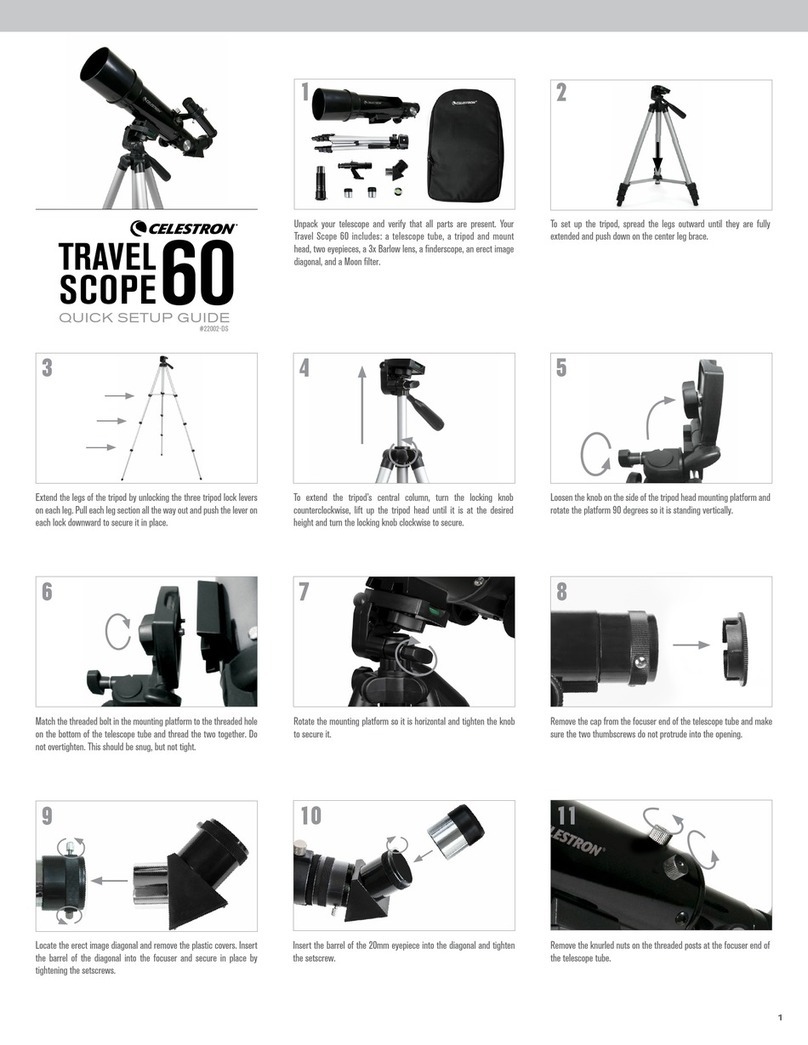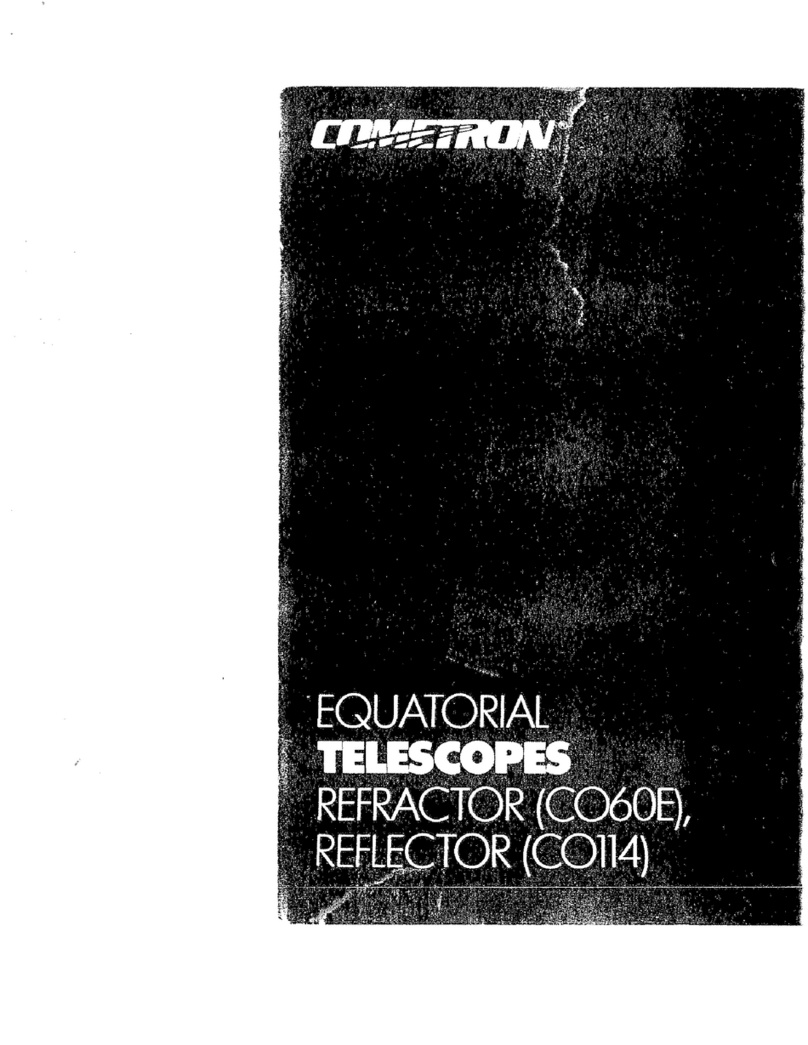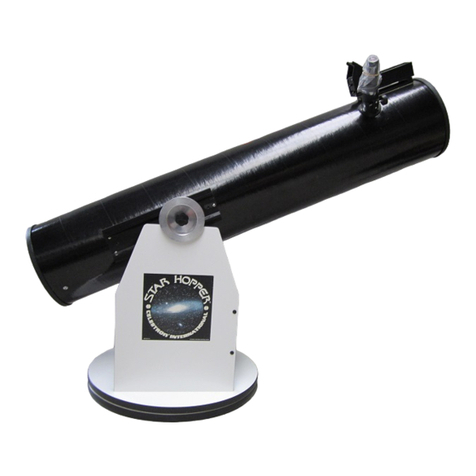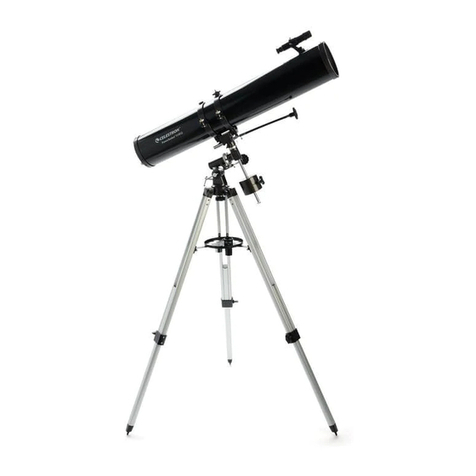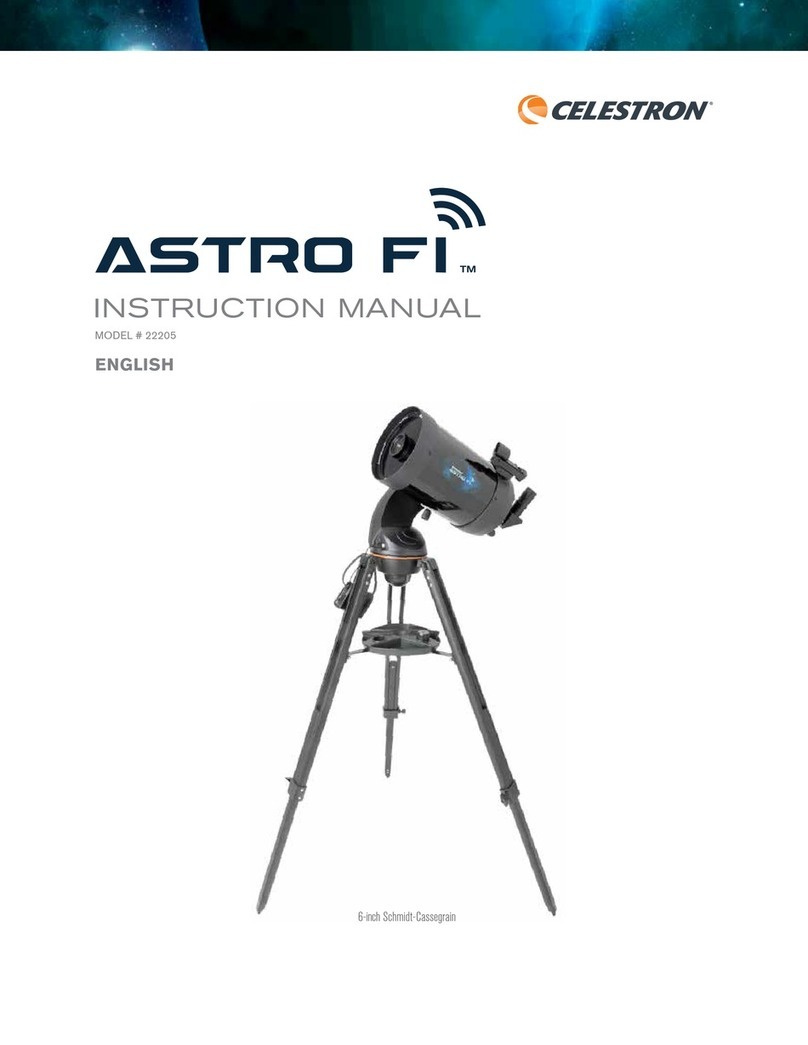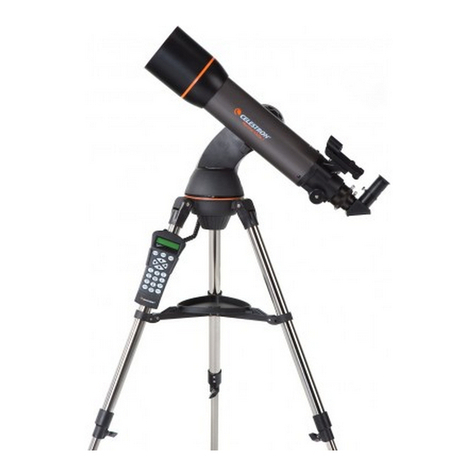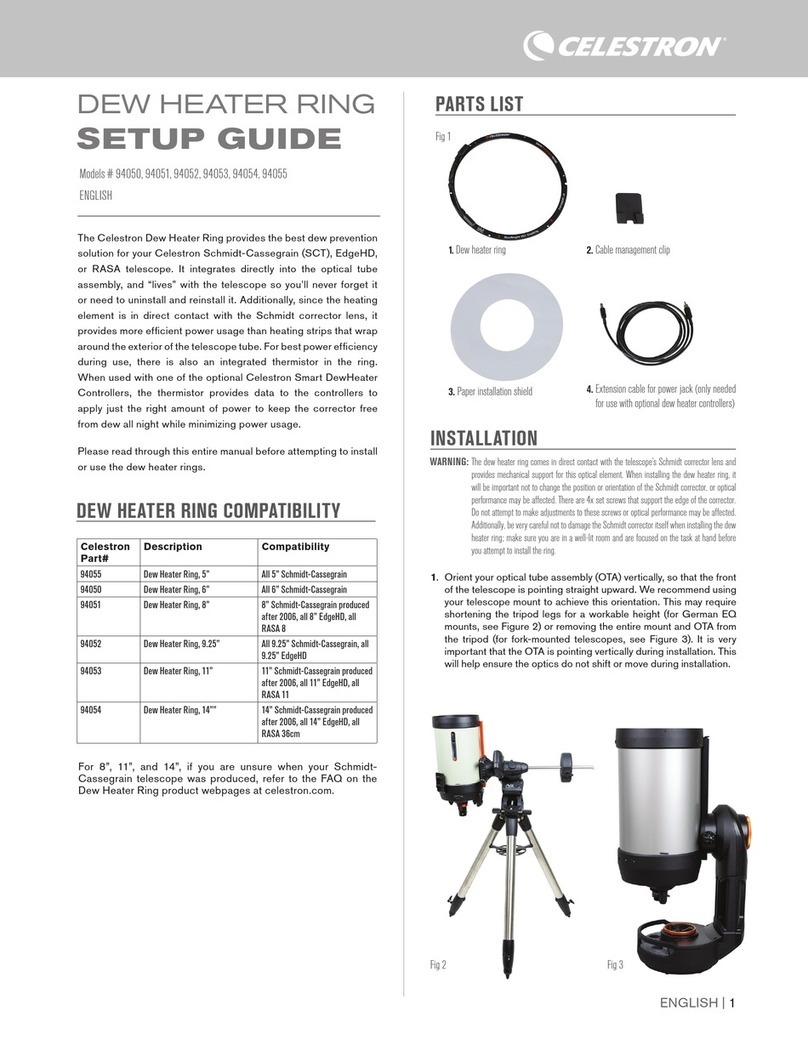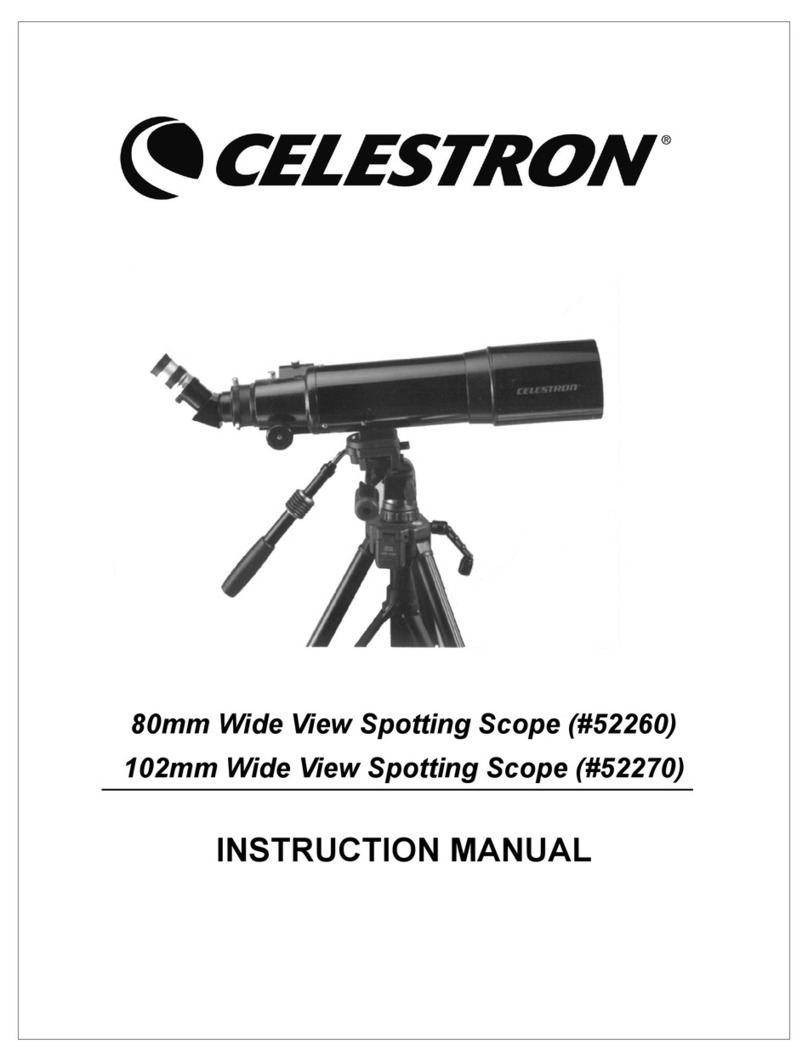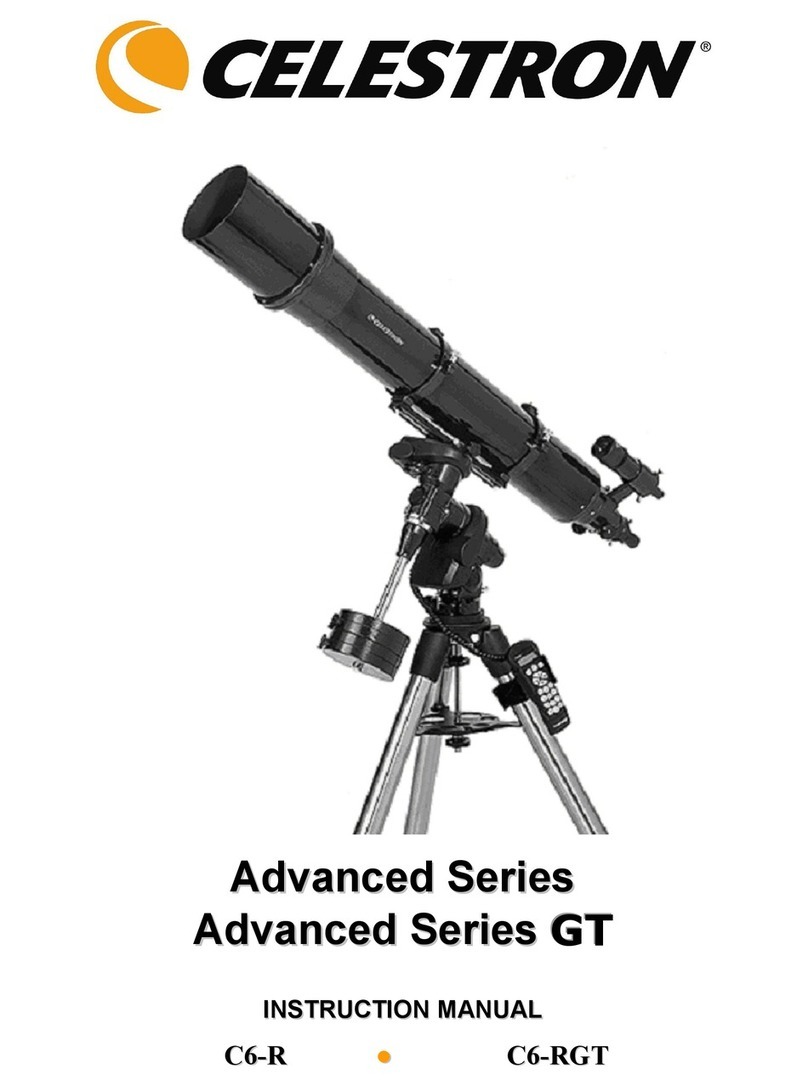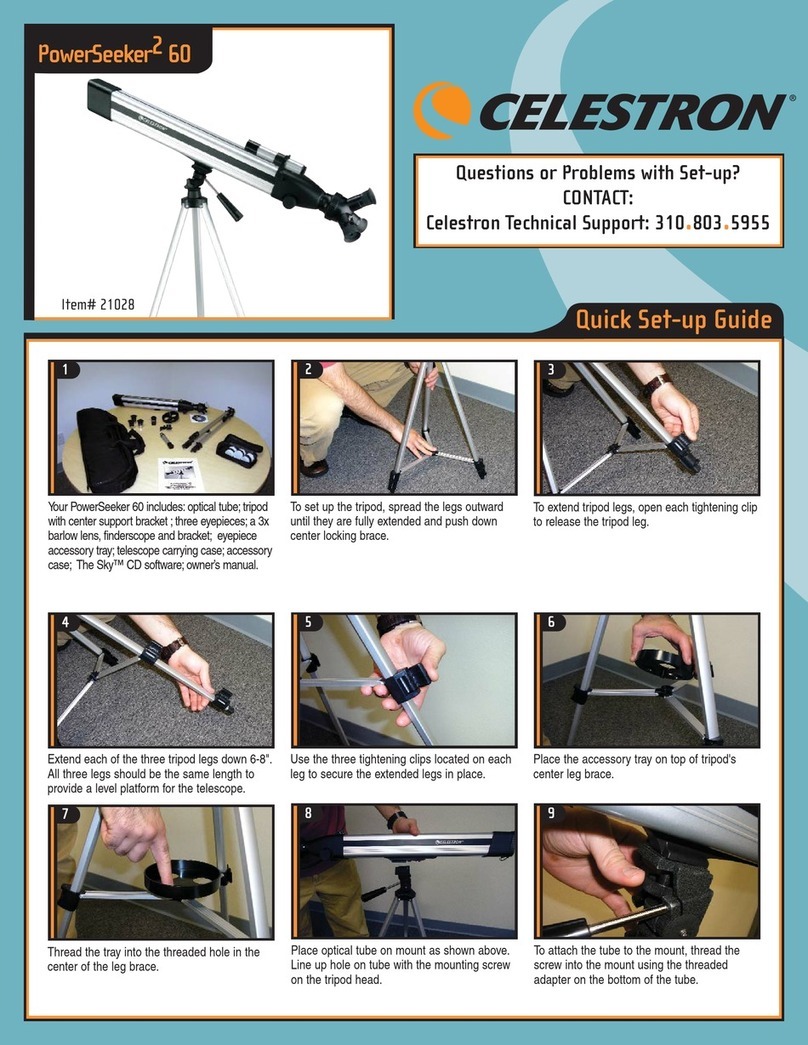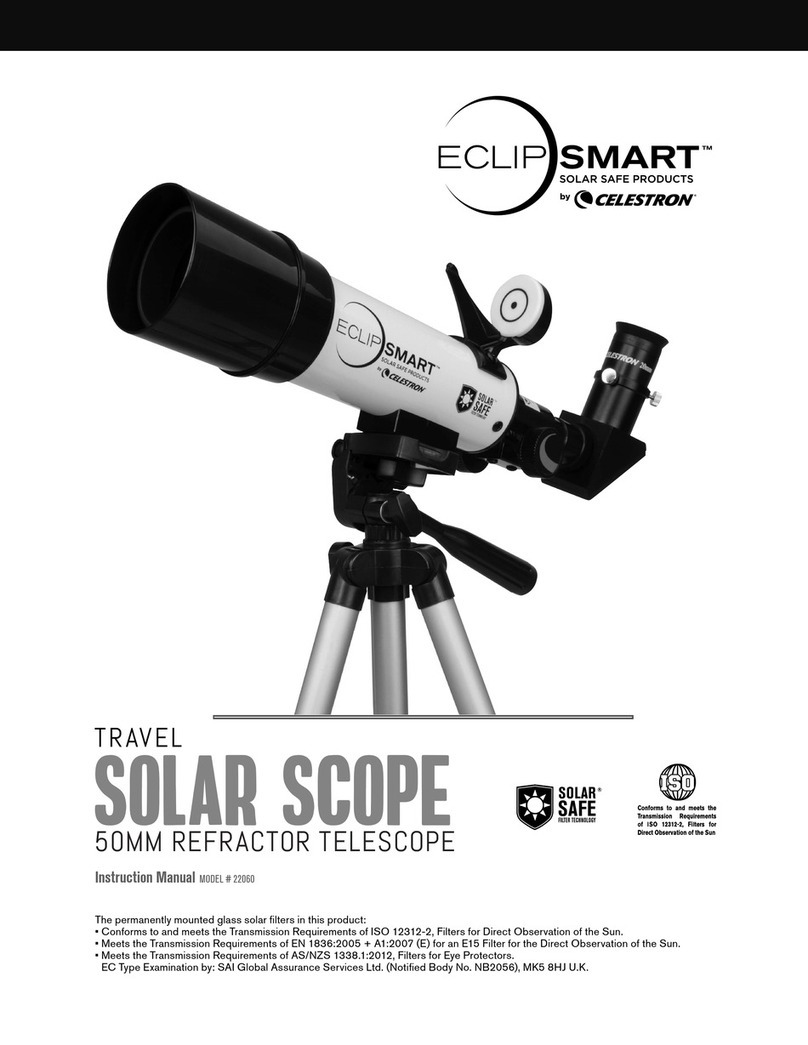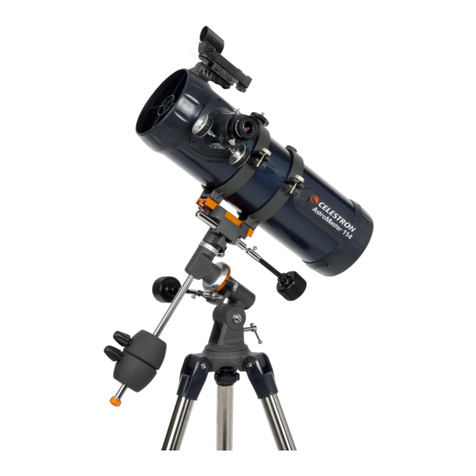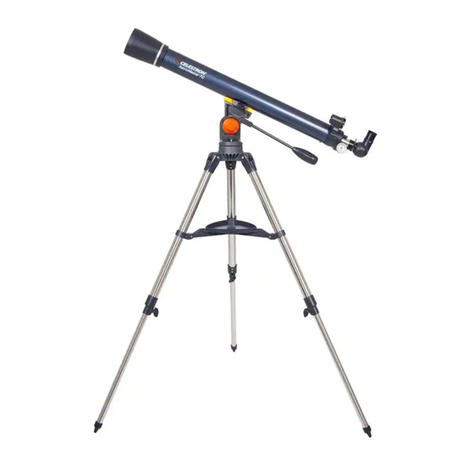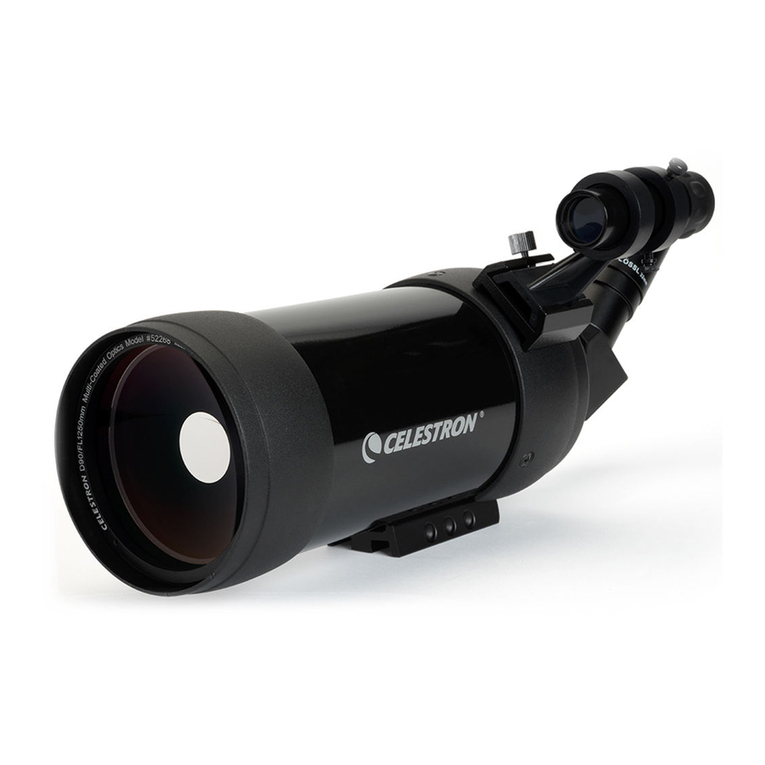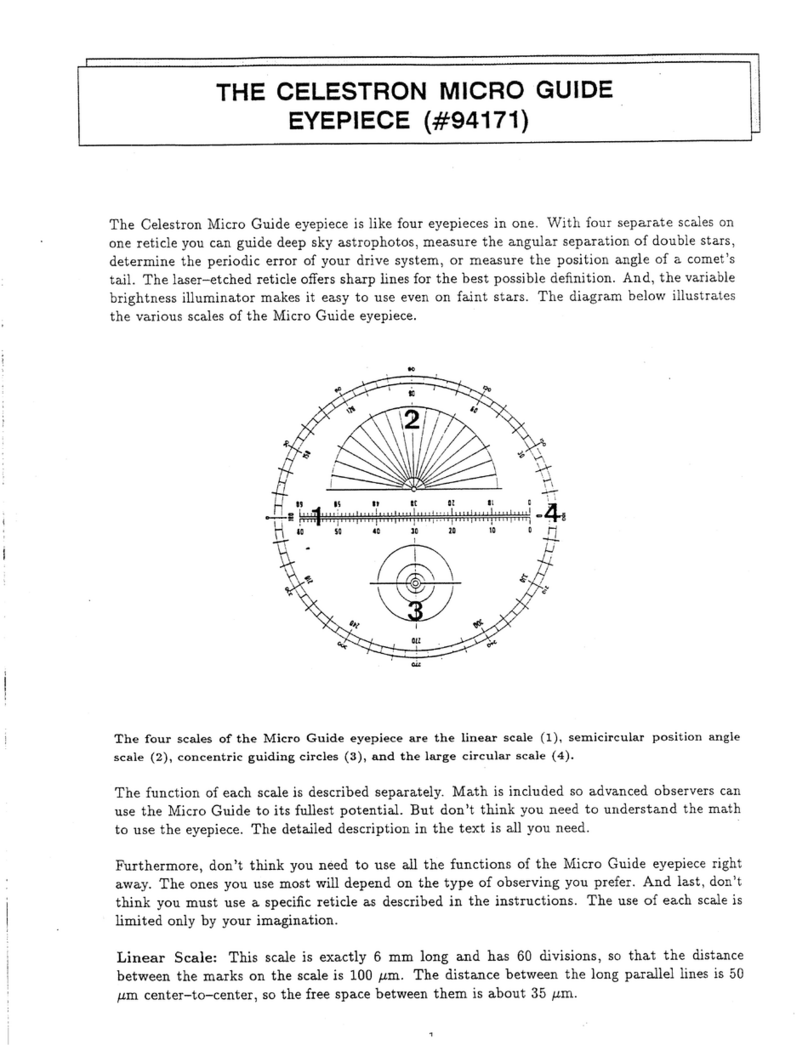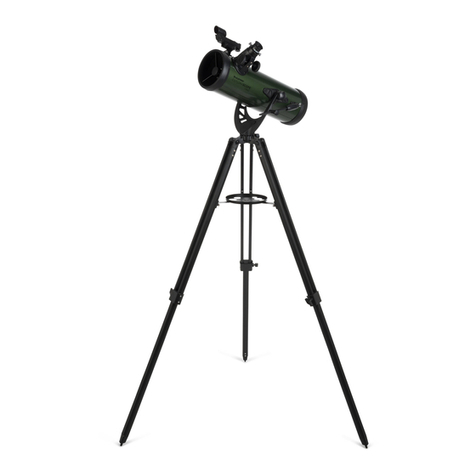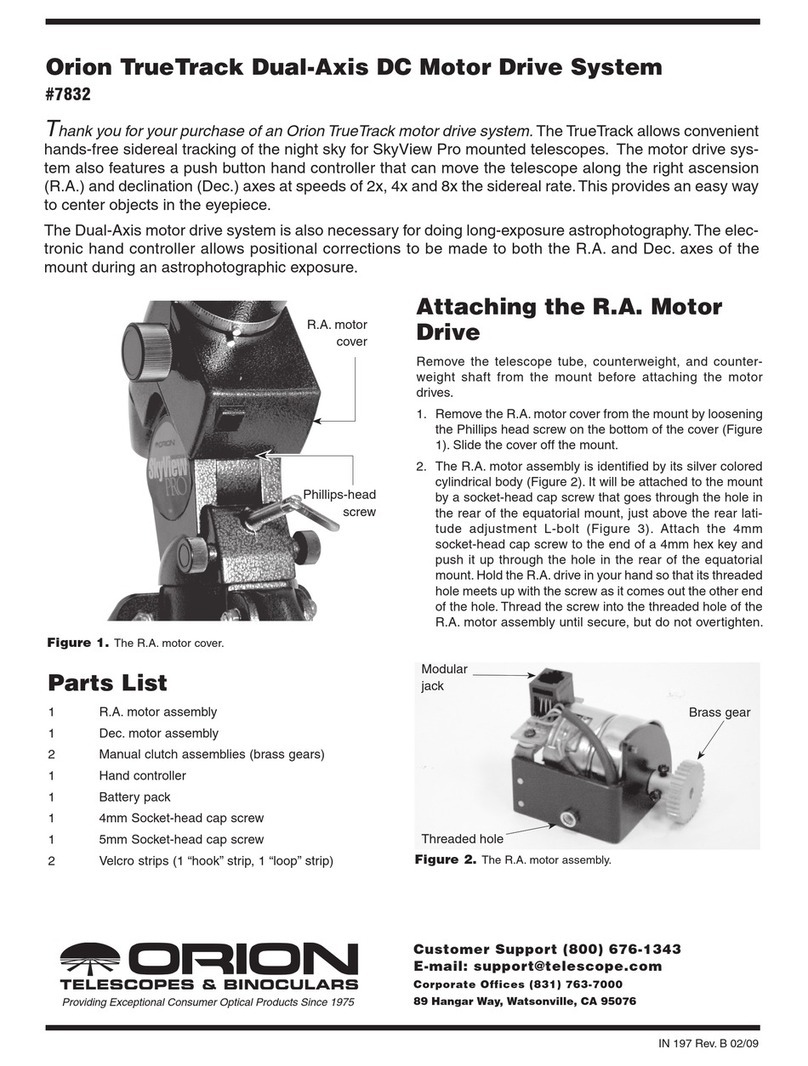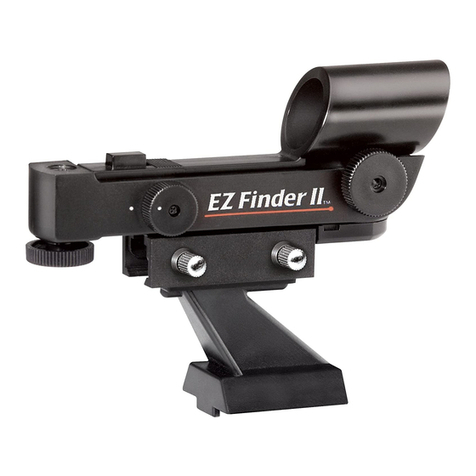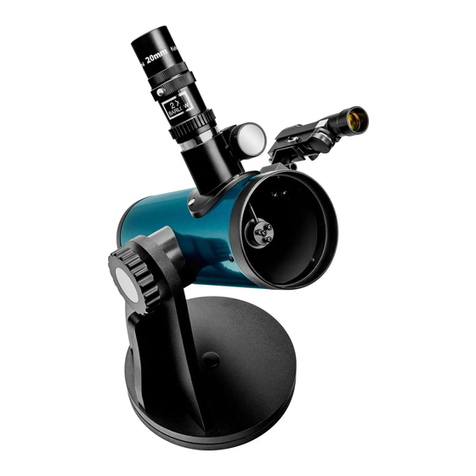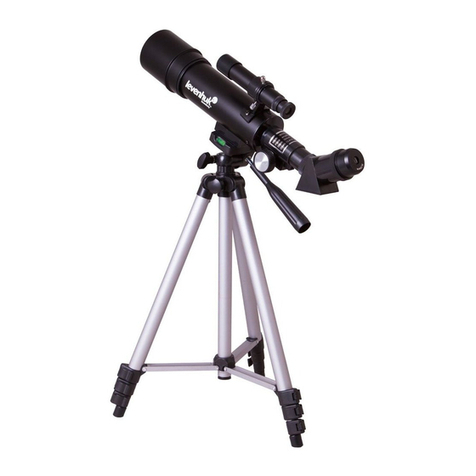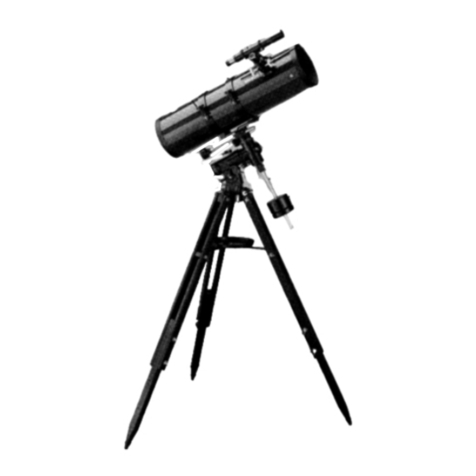ENGLISH | 1
Unpack your telescope and verify that all parts
are present. Your 114AZ-SR Telescope includes:
a telescope tube, a tripod and mount head,
an accessory tray, two eyepieces, a red-dot
finderscope, and a smartphone adapter.
Attach the accessory tray by placing the threaded
post on the bottom of the tray into the threaded
hole in the center of the leg brace. Turn the entire
accessory tray clockwise until it is fully seated. If
necessary, you may rotate the tray counterclockwise
slightly so that the eyepieces holders in the tray are
not blocked by the leg brace arms.
While holding the telescope tube above the
altazimuth mount, insert the end of the long silver
altitude slow motion rod on the left side of the optical
tube into the rod guide on the left fork arm of the
mount.
Tighten the silver locking knob on the rod guide,
then thread the two telescope mounting hand bolts
through the fork arms and into the two altitude hubs
on the telescope tube. They need to be snug, but do
not overtighten.
To set up the tripod, spread the legs outward until
they are fully extended and push down center leg
brace.
ITEM #22410
To extend the legs of the tripod, turn the locking
knob on each leg section counterclockwise to
loosen. Then, pull the lower leg section all the
way out and retighten the locking knob to secure
the leg in place.
Lower the telescope tube until the two altitude hubs
on either side of the tube slide into the notches at
the top of the fork arms.
ENGLISH
Remove the cap from the focuser and make sure the
two thumbscrews do not protrude into the opening.
Insert the barrel of the 26mm eyepiece into the
focuser and tighten the setscrew to secure it in
place.
Locate the finderscope and loosen the two Phillips
head screws on the right side of the finderscope.
Slide the finderscope over the bracket on the
telescope tube and tighten the Phillips head screws
to secure the finderscope to the rail.
Remove the large lens cap from the front of the
telescope. To observe, look through the eyepiece
as shown above. Focus the image by turning the
focusing knobs below the focuser.
For additional magnification, you can swap out the
26mm eyepiece for the 9.7mm eyepiece. This will
increase your magnification from 23x to 62x.
To move the scope right and left, hold a tripod
leg with one hand while the other hand uses the
panning handle to move the scope as required. The
azimuth locking screw can be loosened or tightened
to adjust the tension to your preference.
To move the scope up and down over large
distances, loosen the silver locking knob on the
rod guide. Use one hand to manually move the
scope to the desired angle and secure it in place
by tightening the silver locking screw.
To move the scope up and down in fine
increments, keep the locking knob on the rod
guide tightened and simply rotate the silver
knurled knob on the altitude slow motion rod.
This allows for fine adjustment when centering
a target or when tracking a celestial target as it
appears to drift across the night sky.
NOTE: The slow motion rod has a limited range
of motion. If you hit one of the stops, you
can reset the rod by loosening the locking
knob on the rod guide and then turning the
slow motion knob until it is in the center
of its travel. Tighten the locking knob and
resume normal use.
Quick Setup Guide
CELESTRON 114AZ-SR
SMARTPHONE READY REFLECTOR TELESCOPE
1
6
1211
2
7
13
4
9
15
3
8
14
5
10
